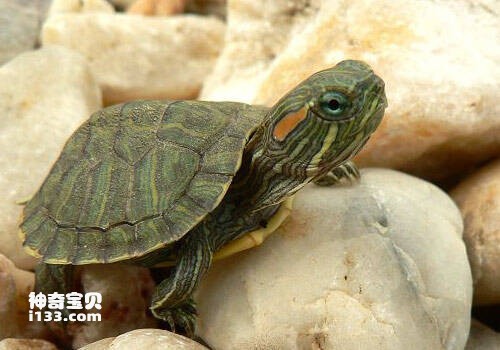The Brazilian turtle, also known as the Brazilian red-eared turtle, is named because there are two thick red stripes on both sides of the back of its head. Most species are found in Brazil. The Brazilian turtle is a world-recognized ecological killer and has been listed as one of the more than 100 most destructive species by the World Environmental Protection Organization. Many countries have listed it as a dangerous invasive alien species! China has also listed it as an invasive alien species, and its damage to China's natural environment is immeasurable.

Living habits: Brazilian turtles live in valleys and rivers, living amphibiously on land and water, and are semi-aquatic. During the day, they like to hide in caves or dark and hidden places, and sometimes bathe in the water or bask in the sun. Activity is frequent at dusk, especially after rain. It has the habit of climbing and living in groups. It is docile and timid in nature. It likes to be secluded and is afraid of noise. It likes to be clean but is afraid of dirt. Its growth water temperature is 25-35℃, and its feeding temperature is 20-35℃, but its appetite is strongest at the water temperature of 29-32℃. Stop eating at 36°C, hibernate at 38°C, and tolerate high temperatures of 40°C. When the temperature drops below 16°C, they are in a state of hibernation, and below 1°C there is a risk of death. Because Brazilian turtles use their lungs to breathe, they need to surface on the surface to do so. The length of the interval is directly related to the water temperature and the intensity of their activities. When the water temperature is below 12°C, you can dive underwater for a long time and perform weak throat breathing; when the water temperature rises to 25°C, you need to come up to breathe in about 25 minutes. In spring, when the water temperature rises above 16°C, a small number of turtles begin to move for food. Above 20°C, they basically eat normally, but the food intake is very small. When the temperature is low, the activity time is from 10 am to 3 pm. When the temperature is high, activities are more frequent from evening to early morning. The temperature is low from November to March of the following year, and they often hide in the dark without eating or moving inside. They begin to hibernate in early April. From May to September, the temperature rises, the range of activities increases, and the activities gradually become more frequent. On sunny days in early spring and late autumn, I like to warm my body by basking in the sun. June to August is a period of high activity. At noon in the hot summer, they usually rest in hidden land and turtle nests. They are mostly active in the water at dusk and night, and their activity gradually weakens after 10 o'clock at night. After mid-October, the temperature gradually drops, the activity weakens significantly, and it enters a semi-hibernation state. As the temperature continues to drop, hibernation also deepens.
The Brazilian turtle is an omnivore. They are wild turtles in nature and mostly eat meat. Brazilian turtles have no selective feeding time and eat both day and night. In the hungry state, there is a behavior of grabbing food, and the phenomenon of eating big and small occurs.
Harm: Brazilian turtles must not be released into the wild. Government departments should prohibit citizens from buying turtles and releasing them into the wild. It is listed as one of the most dangerous invasive species in the world because of its massive plunder of similar survival resources. The Brazilian turtle was originally introduced for the same purpose as the apple snail. It has the same characteristics as large individual, wide feeding habits, strong adaptability, fast growth and reproduction, high yield, strong disease resistance, and high economic benefits. After the introduction, it has been cultured in various parts of China. . Because the Brazilian turtle has strong overall reproductive capacity and high survival rate, its ability to forage and snatch food is stronger than any native turtle species in China! If it is released into the wild, it will erode ecological resources due to its basically no natural predators and large numbers, which will seriously threaten the survival of China's native wild turtles and similar species. In tourist attractions that are suitable for survival and with the active release of the turtles by the public, you can basically see the shocking sight of ponds full of Brazilian tortoises!
Therefore, people who like to release animals must remember not to buy Brazilian tortoises for release, otherwise the release will become "killing".
animal tags:
We created this article in conjunction with AI technology, then made sure it was fact-checked and edited by a Animals Top editor.